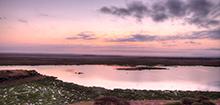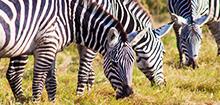
Date Published:
A cross-border aerial census for elephants and buffalos between Kenya and Tanzania has been launched today in Narok.
The two-week Mara-Serengeti census is being held to determine the numbers of elephants and buffalos in the ecosystem, their distribution, trends as well as human activities.
The results will be used to make wildlife management policy decisions as well as determine the impact of various interventions to conserve wildlife. The exercise, last conducted in 2014, is held every three years.
The launch was presided over by the Narok County Secretary, Simon Sopia who represented the Governor HE Samuel Ole Tunai. The function was attended by various stakeholders, including narok county Government Officials, Kenya Wildlife Service (KWS), Mara Elephants Project, Mara Triangle, Maasai Mara Wildlife Conservancy Association, and World Wide Fund for Nature (WWF-Kenya) officials. County Tourism and Wildlife Chief Officer Koinet ole Lemei and Narok Town MCA who is also the Chairman, Narok County Assembly Tourism and Wildlife Committee, Parsaloi Torome also attended the function.
Ms Lena Munke, the Tourism and Wildlife County Executive Committee Member, said the county had made great strides in conservation, including the recruitment of 300 rangers who were trained at the KWS Paramilitary Academy in Manyani last year and launch of Sekenani Road by President Uhuru Kenyatta last month.
She noted that Narok County was facing new conservation challenges related to more sedentary lifestyles, sale and fencing of land as well as pastoralists turning to crop farming, all adversely affecting wildlife conservation. “Mara cannot and won’t be fenced soon because of links to wildlife dispersal areas,” she said.
Mr Brian Heath, the KWS Board of Trustees member, called on stakeholders to strive to make conservation a legitimate and viable land use that can compete with others. He noted that the survey will help establish the population status and distribution of elephants and buffalo in Mara-Serengeti ecosystem, which is important to establish trends of their population over the years.
Heath noted that past surveys following sample count methodology had found a significant decline in wildlife numbers in the last 50 years. “We have to try and change this trend. We have dealt with poaching and sale of ivory but elephants are being killed in retaliation for destroying people’s livelihoods.”
He said: “Let’s make the conservation of elephants a viable land use to attract investors seeking returns and provide incentives the way it’s done for agriculture.
Dr Jared Bosire, the WWF-Kenya Director of Conservation, warned that the Mara ecosystem was at great risk unless urgent measures are taken. “Without the Mau and the Mara River, we have no Maasai Mara. As communities work and avail their land for conservation, they should get direct and indirect benefits.”
He said WWF-Kenya had worked in the greater Mara for the last 15 years using an integrated landscape approach from the Mau catchment to the lowlands in Serengeti. He announced that his organization was working with Narok County Government to develop spatial planning to regulate land use practices in the area.
Mr Torome, who is also the chairman of the Tourism and Wildlife Committee at the Narok County Assembly, said the committee had proposed the upgrading of the Ewuaso Nyiro Airstrip to ease transport for tourists visiting the Mara. He said this would not only benefit local transporters but hoteliers as well.
The survey is being funded by Kenya Wildlife Service, Narok County Government and World Wildlife Fund for Nature – Kenya.





